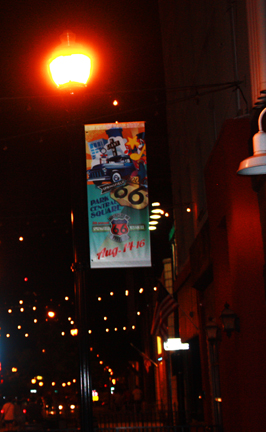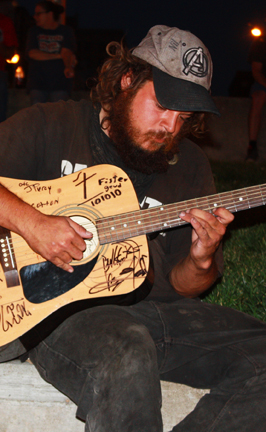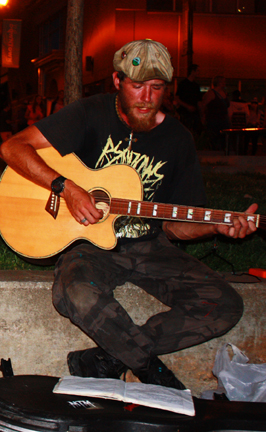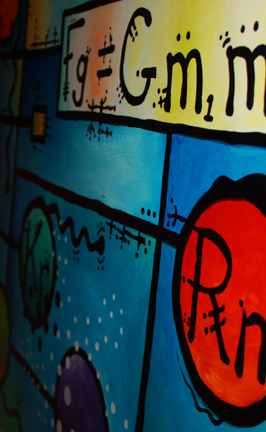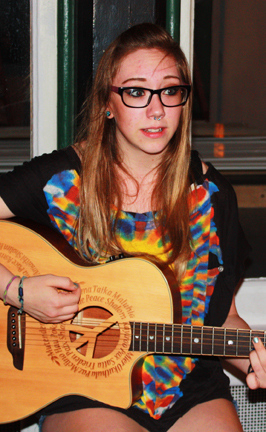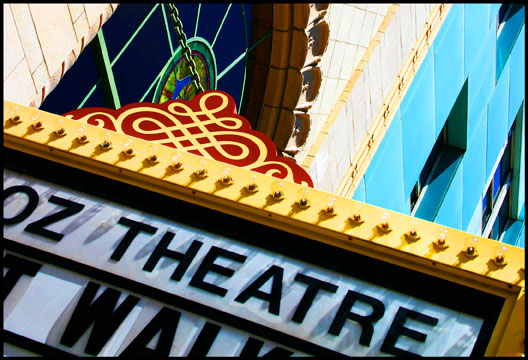
plate 1.
The Gillioz
by Joshua Heston
It was to be a movie palace that would last forever. That was back in 1924.
No ordinary theater, The Gillioz (originally to be named The Gaiety) was to be a palatial “transition” house capable of hosting moving pictures and vaudeville performances. It would seat 1,100 audience members and stand as a centerpiece of a new American age where art, news and entertainment would combine for the common man.
At least that was the apparent endeavor of M.E. Gillioz, bridge builder from nearby Monett, Missouri. It is likely Gillioz (pronounced GILL-oiz) obtained early plans for America’s soon-to-be-opened Route 66 and a movie palace would be a lucrative addition to Springfield and the nation’s Mother Road.

plate 2. Gillioz Auditorium right, Shrine Mosque behind.
The theater would prove an intricate project. The massive block of an auditorium rose on present-day Olive Street, behind and north of the bustling downtown square (Plate 2). But a great palace situated on a back street would do no good. Visibility was key.
In order to create that visibility, Gillioz leased the Queen City Laundromat, a long, narrow business sandwiched between the Woodruff Building and Netters Department Store. The laundromat was demolished, replaced by a narrow, ornate lobby opening directly onto St. Louis Street which became — in the spring of 1926 — Route 66.
Outwardly, the Gillioz Theatre was designed in a fantasy “mission / Spanish revival” style (though Egyptian and Arabic motifs would be scattered throughout). Beneath the ornate surface the building was built, well, like a bridge. A network of steel beams interlocked to create the structure — which was then encased in cement.
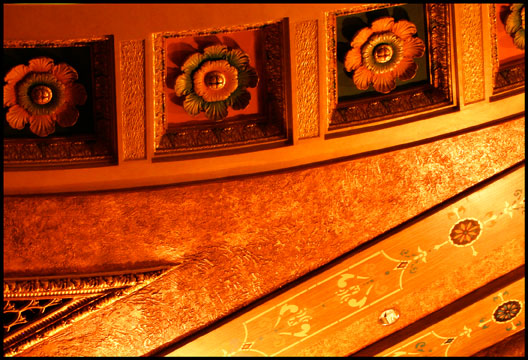
plate 3. Gillioz Auditorium floral detail.
A shell of red brick finished the exterior (Plate 2). Inside, plaster, wood, terrazzo and a dizzying array of floral details concealed the cement and girderwork (Plate 3).
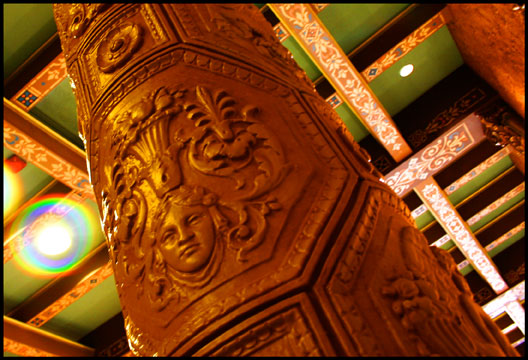
plate 4. Column detail.
It was a palace for the common man, meant to last forever, and it opened on the autumn night of October 11, 1926.
It must have been quite a show. There were the Swiss Songbirds (a vocal and ukulele duo), then an organ concert (a massive alcove at stage left housed a mighty Wurlitzer pipe organ). After the live vaudeville performances, the motion picture screen came to life with a Felix the Cat cartoon and newsreels flown in from New York City specifically for the Gillioz’ opening night. The newsreels included game highlights from the 1926 World Series; Games 6 & 7, Cardinals versus Yankees. Grover Cleveland Alexander pitched. The teams had played Yankee Stadium just the night before. The gala evening closed with a Reginald Denney film, Take It From Me.
M.E. Gillioz’ great movie palace was open for business. For the next 54 years, The Gillioz would stand as an ornate, glowing landmark on Route 66. And the theater would host three world premieres.
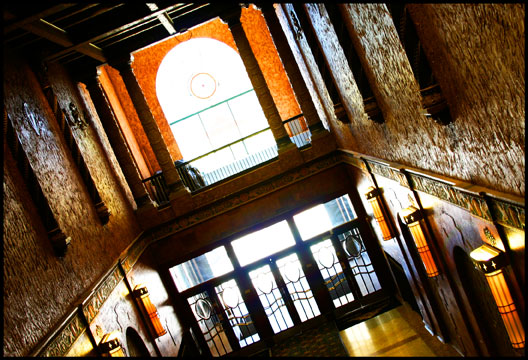
plate 5. Gillioz Lobby, looking toward St. Louis Street.
The first premiere was Swing Your Lady (1938), an Ozarks-themed musical comedy starring Springfield’s own Weaver Brothers & Elviry as well as Humphrey Bogart and Ronald Reagan. World premiere number two and number three would both take place in 1952: The Winning Team (June 6) and She’s Working Her Way Through College (July 4).
The Winning Team featured Ronald Reagan playing real-life Cardinals’ relief pitcher Grover Cleveland Alexander. Doris Day starred as Alexander’s wife Aimee.
It would prove to be a huge event.
The June 6 premiere coincided with a reunion of the 35th Army Division at the Shrine Mosque Auditorium. Thousands of veterans flooded into town as well as the President of the United States (Harry S Truman was, after all, a 35th Army Division veteran himself). Spotlights on St. Louis Street lit up the dark summer sky above The Gillioz. Ronald and Nancy Reagan were ushered into spacious box seats at stage left (Plate 9). It would be a glittering moment for downtown Springfield and The Gillioz — a moment of success that would pass all-too soon.
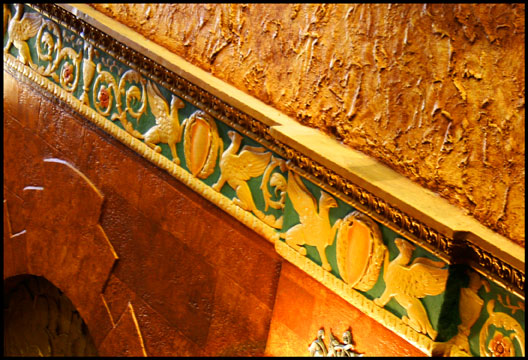
plate 6. Griffin artwork detail.
The economic malaise and social discontent of the 1960s and ’70s hit the aging theater hard. Multi-screen cinemas like the Century 21 — devoid of ornate sculptures and terrazzo floors but showing plenty of first-run films — drained movie-goers from downtown.
In decline, management turned to second-run movies as well as PTA-sponsored kiddie flicks in the afternoon (and raunchy adult films at night). The 1976 King Kong remake by Dino De Laurentiis would play here as did Smokey and the Bandit the next year. The last movie to show at the Gillioz — on July 15, 1980 — was The Amityville Horror.
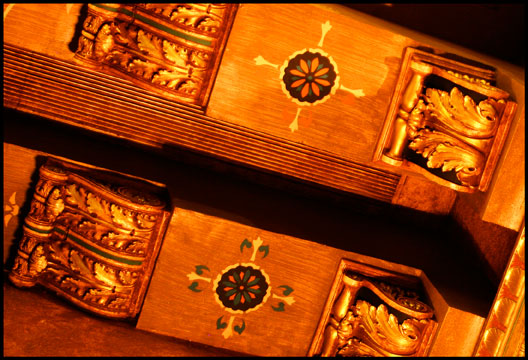
plate 7. Auditorium woodwork / stencil detail.
Later that summer the Springfield Regional Opera closed out the theater with three performances of — appropriately enough — La Traviata, the tale of a beautiful courtesan dying of consumption. The Gillioz, too, was dying. Vacant and dark, the glittering lobby and massive auditorium would become home to vagrants and drug addicts for nearly a decade.
Thankfully, restoration of the Gillioz Theatre began in 1990, led by the Springfield Landmarks Preservation Trust. Sixteen years later — renovations complete — The Gillioz re-opened on Friday, October 13, 2006. Since then, the venerable movie palace has hosted a steady stream of vintage films, concerts, comics, and broadway performances.
The Ozark Mountain Daredevils played to a sold-out crowd in 2007, returning in 2010.
Matt Loveland, resident historian for The Gillioz, granted StateoftheOzarks a tour of the old palace on a sweltering summer afternoon last year. Upon entering the darkened lobby, it took a moment for eyes to adjust. Arabesque columns swam into view, marked by glowing art deco light fixtures (Plate 8). Loveland explained, “The fixtures are original. In the summer, they can be turned to blue and green to make you feel cool — and then red and yellow to make you feel warm in the wintertime.”
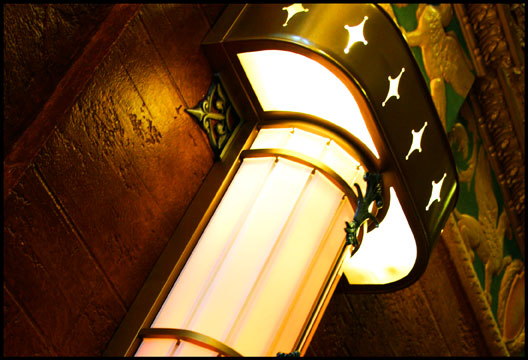
plate 8. Lobby art deco lighting detail.
Original terrazzo flooring and vintage carpeting led down the long hall (Plate 5). On the walls, griffins spar with cherubs (Plate 6). A “girl-watching” rotunda is framed by exquisite floral moldings and stenciled beams. The auditorium is breathtaking.
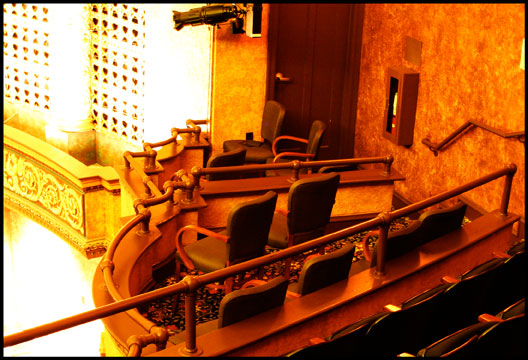
plate 9. Box seats, stage left (the Reagan Seats).
Themes from the lobby (arabesque moldings, tiles, stenciled beams and an assortment of fantasy themes) explode into being. The Gillioz Theatre itself is a work of art. Shafts of light showcase the old pipe organ screens, reminiscent of Moorish Spain and the Alhambra (Plate 10). The box seats used by Ronald and Nancy Reagan are still there, restored to their former glory (Plate 9).
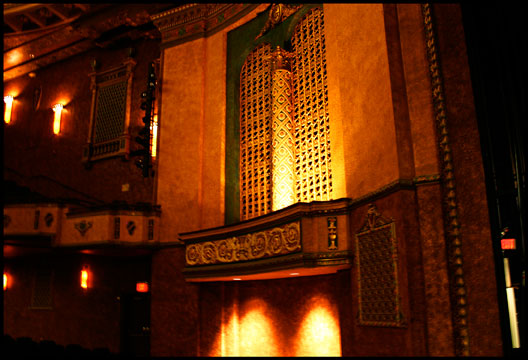
plate 10. Arabesque organ screen motif.
A majestic golden dome soars overhead, framed by floral carvings and stenciled woodwork (Plate 7). Mysterious designs — faces, shields, harps, roses, cow skulls, half-moons, swords — adorn walls and columns (Plate 4). It can be a dark, mysterious place. Before the renovation, the old ushers’ room on the second floor was introduced by a simple sign on the door: Caution No Floor. Red and blue tatters of an old Jimmy Stewart poster remain on the wall. And far up on the balcony is the cramped projection room.
It was here — on the stroke of midnight, New Year’s Eve, 1962 — that elderly projectionist Martin Kirchner died of a heart attack seconds before he was to begin the film From Ballet to Burlesque. Loveland notes, “It was a big New Year’s Eve celebration and George Hunter who was the regional manager of Fox Midwest Theaters, had just talked to [Kirchner] about 10 minutes till midnight. The countdown clock struck midnight and nothing happened. People up here started stomping on the floor because the manager’s office was right downstairs.
“Mr. Hunter ran up the stairs, unlocked the door, and found Mr. Kirchner dead. Mr. Kirchner’s wife Edna was sitting right outside the door when it happened. He was 62 years old, and had been working at the theater since 1926.” After 85 years, the grand old Gillioz Theatre stands, beautiful, alluring, mysterious, a testament to an Ozark bridge builders’ dream.
You know something? It sounds like something out of an old movie.
February 18, 2011


